| #4 (permalink) |
 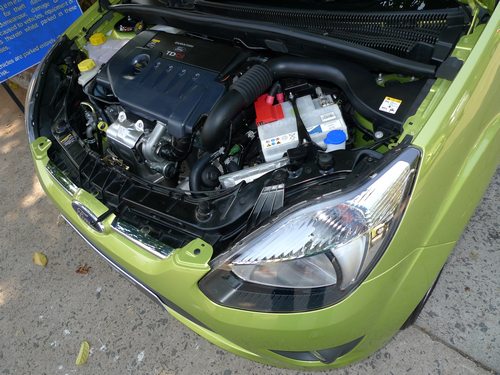 The Fiesta's 1.4 TDCi diesel finds its way into the Figo and is currently the engine of choice (over the 1.2L petrol). This Duratorq unit is rated for 68 BHP (@ 4000 rpm) and 160 NM of torque (@ 2000 rpm). A key advantage of the 1.4 diesel is that, it does NOT have the turbo-lag of the Fiat 1.3 MJD (aka our national engine) used in several other hatchbacks. Actually, the TDCi doesn’t seem to have turbolag at all. I even attempted driving as an amateur who has experienced only naturally-aspirated engines. Despite releasing the clutch pedal carelessly, I did not stall the diesel. This absence of turbo-lag makes city driving in the Figo diesel substantially more convenient than in its 1.3 MJD competitors. Low end throttle response is excellent, making the Figo diesel well suited to our urban driving conditions. The engine is immensely tractable and the driveability of a high order. The 2nd gear can pull clean from as low as 10 kph, and all the way to a notch below 80 kph. Mid-range performance is good, but the 1.4 doesn't have any top end to speak of. The 1.4 TDCi revvs freely to 4,000 rpms. If you insist, the engine will revv on to 4,900 rpms. However, it’s best to work the torque and upshift earlier, even when driving spiritedly. You can feel it running out of breath after 4,000 rpms. Again, the top-end is unimpressive. This engine will do well within the city, but expect dull performance on the highway. NVH levels on the inside are just about average. The diesel is thankfully refined and doesn’t really intrude with unnecessary vibration, including at idle. On the other hand, it can get fairly audible when being worked. Ford says they have used double insulation on the diesel's doors. Maybe they need a triple? The less impressive engine is the 1.2L 16V DOHC petrol. It's an all aluminium unit, derived off the Fiesta's 1.4 petrol. It's easy to tell what family the engine is from. The unit sounds exactly like the other Ford petrols we’ve had in India. The Duratec petrol is rated for 70 BHP (@ 6250 rpms) and 102 NM of max torque (4,000 rpm). Both, the outright power and torque ratings are lower than competition. The Ritz K series is rated @ 84 BHP / 112 NM of torque (soon to arrive in the Swift), while the i10 1.2 Kappa churns out 79 BHP / 112 NM torque. Expectedly, outright performance is strictly average. One advantage, relative to the competition, is the low end throttle response (typical of Ford petrols). In thick traffic, it does not need to be revved as much as say, the 1.2 Kappa unit. The 2nd gear can work right from 10 kph itself. Thus, after crossing a speedbreaker, you can drive off in 2nd (no need to downshift to 1st). The third only at 30 kph and above. Within the city, I don’t expect you to downshift from 2nd to 1st as often as you will from 3rd to 2nd. Throttle response is decent, its not overtly sharp but neither is it too dull. Thanks to the power ratings, and the Figo's European build, there isn't a doubt that you need to work this engine to make progress on the road. It's relatively free-revving up until 5,500 rpms, progress is rather slow afterward. You can stretch higher to over 6,000 rpms, but I wouldn’t bother. Good thing that the engine doesn’t feel coarse after 4,000 rpms. Ford claims a 0 – 100 kph timing of 15.5 seconds for the petrol and 15.8 for the diesel. If I were to rank the 1.2 L petrols in order of competency, it would go thus : Ritz 1.2 > i10 Kappa > Figo > Punto > Fabia (3 cylinder). Either engine uses the same (IB5 Ikon) gearbox with slightly different final drive ratios. The gearshift has reasonably short throws and the shift action is positive. The unit is a sure-slotting one and you won’t choose the wrong gear erroneously. Note that it isn't an ultra-slick Japanese box and does require a little effort. A USP of nearly all Ford cars sold in India has been that they are amazing to drive. Ford's DNA boasts of amazing handling with an acceptable (not plush, acceptable) ride. This trait completely extends to the Figo. The suspension behaviour is very mature, classic European stuff, and similar to the Fiesta. The ride quality is compliant; it’s not plush, nor is it uncomfortably stiff. The correct terms would be “compliant” and “composed”. We drove rather spiritedly on Goa’s internal roads, some of which have all kinds of undulations. The rear stays planted. It’s not bouncy like the tall boys, nor is there unnecessary vertical movement. The suspension damping is perfect with the Figo’s suspension staying composed even on uneven tarmac. Of course, the firmness will make those super large potholes harsh on the inside. Unsurprisingly, the ride is much like that of the Fiesta. The driving experience starts with the steering : No electric steering rubbish here, the unit is pure hydraulic and the steering unbelievably direct. You can chuck the car in and out of gaps with a mere flick of the steering. The PS is very quick making the Figo one of the rare cars that you can have fun driving at <80 src="http://www.team-bhp.com/forum/images/smilies/wink.gif" alt="" title="Wink" class="inlineimg" border="0"> The steering requires distinctly lesser effort than the Fiesta's at 0 kph parking speed. Within the city, the steering is sufficiently light. Not feather light like an i10s, yet no one will complain of the effort required. The clutch action is light too. This combined with a positive gear shift and good low end response (from either engine) makes the Figo well suited to Indian cities. I know for a fact that the 1.6 100 BHP Fiesta engine will make its way into the Figo sometime in the future. When it does, the lineup is complete. A fuel-efficient diesel for the mileage conscious and a 100 BHP petrol stonker for us enthusiasts. __________________ |
 |
| | #6 (permalink) |
| The Smaller but Significant things: Long key. Boot release button too. These type of soft-plastic buttons break after 2+ years of use (based on my experience of using a similar key in the Benz). Dedicated hard plastic buttons are better on durability: 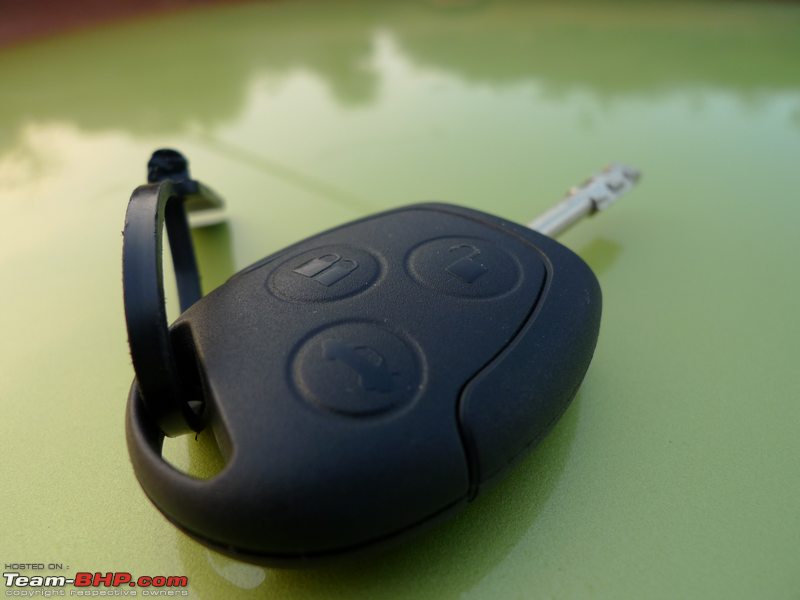 In case you go "no bottle holders?", door pockets are even marked “one liter” with an image of a bottle and the direction it should sleep in:  Fairly unrestricted front air dam: 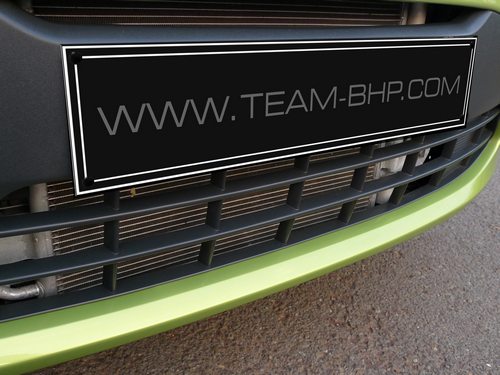 Bonnet release positioned on the passenger side. Not cool: 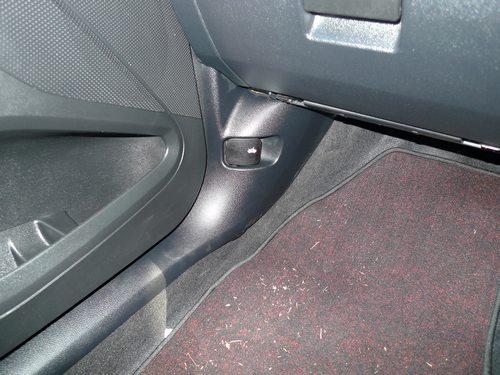 Nice circular air-vents that swivel, thus you can adjust the airflow anyway you want. You can also shut any particular airvent, though some amount of air still flows through. Notice storage spot right behind on top of the dashboard:  Thick rear pillars. Medium sized rear windscreen and side glasses help matters whilst reversing: 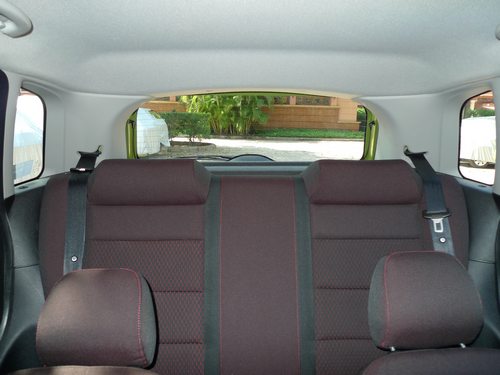 When was the last time you saw felt lining on the door insulation? Sweet:  The feel of the air-con switches is pretty rudimentary. They feel “economy segment” to use:  Rear hatch has a useful grab handle on the inside: 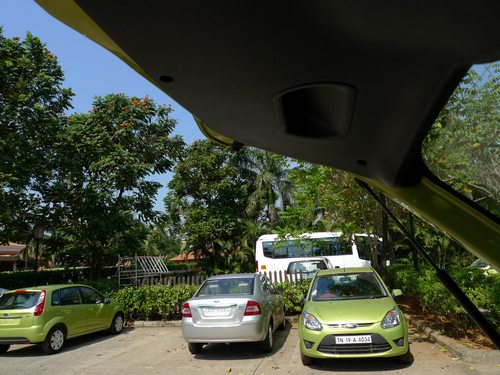 No rear power windows. Door armrest has a storage spot:  Front foglamps: 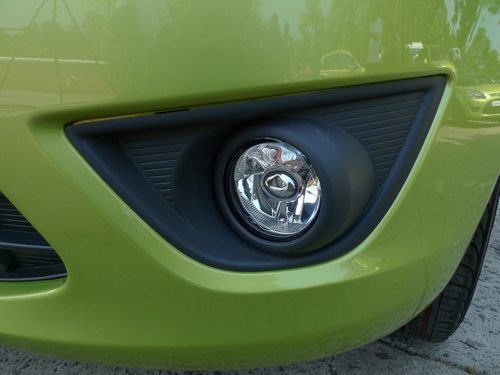 Medium-sized ORVMs. Convex mirrors cover the road well.  Top end variant = Titanium:  Another look at the bulging wheel arches and the uniquely styled turn indicator light:  Have I spoken enough on what I think of the dash colour? Or should I start again.....A view from the passenger's side:  |
